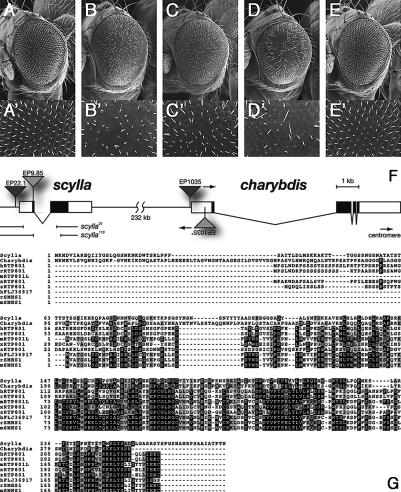Figure 1.
Overexpression of scylla and its paralog charybdis suppresses the hyperactivity of the Inr pathway. (A-E) scylla (C) and/or charybdis (D) overexpression (achieved by EPscy and EPchar, respectively) suppress the PKB/PDK1-dependent big eye phenotype (B). Genotypes: y w; GMR-Gal4/+ (A,A′); y w; GMR-Gal4 UAS-PKB/+; EP837 (≈UAS-PDK1)/+ (B,B′); y w; GMR-Gal4 UAS-PKB/+; EP837/EPscy (C,C′); y w; GMR-Gal4 UAS-PKB/+; EP837/EPchar (D,D′); y w; GMR-Gal4, UAS-PKB/+; EP837/EPscy EPchar (E,E′). (F) Genomic organization of scylla and charybdis and corresponding mutant alleles. (G) Several homologs of Scylla/Charybdis are present in humans (h), rat (r), mouse (m), Xenopus (x), and zebrafish (z). Charybdis bears a coiled-coil domain (amino acids 168-188) not predicted in Scylla. However, the evolutionarily most highly conserved, C-terminal part of the gene family lacks similarities to known protein domains.

